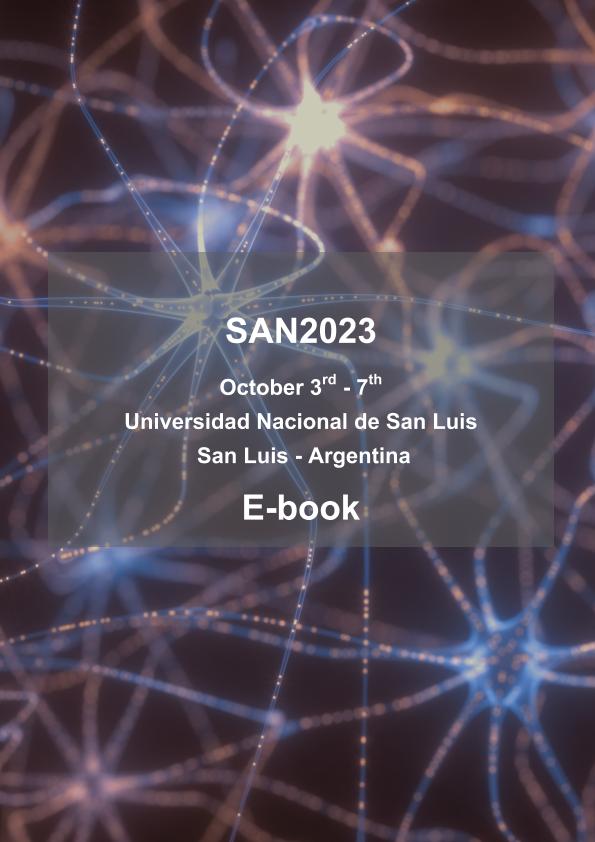Evento
Breathing alterations against hypoxia as a function of early ethanol exposure
Tipo del evento:
Reunión
Nombre del evento:
XXXVIII Annual Meeting of the Sociedad Argentina de Investigación en Neurociencias
Fecha del evento:
03/10/2023
Institución Organizadora:
Sociedad Argentina de Investigación en Neurociencias;
Universidad Nacional de San Luis;
Título del Libro:
SAN2023: E-book
Editorial:
Sociedad Argentina de Investigación en Neurociencias
Idioma:
Inglés
Clasificación temática:
Resumen
Maternal ethanol (EtOH) intake during pregnancy and lactation is a highly frequent “social” behavior in Argentine, exposing fetus or neonates to moderate EtOH intoxication through the amniotic fluid and placenta. Early EtOH exposure triggers a spectrum of neurobehavioral dysfunctions affecting, also, the breathing response. In an animal model equivalent to the 3rd trimester of the human gestation we explore the early ethanol exposure effects on the ventilatory responses in normoxic and hypoxic-air conditions. We also study central areas involved in breathing modulation as the solitary tract nucleus and the medullary raphe system. Our results show that a brief and early ethanol exposure alters both basal and hypoxia-induced breathing frequencies and apneas through modifications in the activation patterns of central areas of study. Actually, early ethanol exposure induces a basal breathing depression in normoxic conditions but, against a hypoxic challenge, ethanol triggers two consecutive altered events: first a lower hyperventilation rate during the hypoxic event itself and then, during the post-hypoxic period, ethanol elicit the emergency of an adaptive phenomenon, the ventilatory long-term facilitation. Alterations in the activation patterns in the NTS and raphe obscurus, and an increase in the 5HT levels in the medullary raphe nuclei (magnus, obscurus y pallidus) were observed as a function of different ways of early ethanol exposure. Funding by MINCyT-Cba; FONCyT and SECyT-UNC.
Palabras clave:
Ethanol
,
Hypoxia
,
Breeathing
,
Neonates
Archivos asociados
Licencia
Identificadores
Colecciones
Eventos (IIPSI)
Eventos de INSTITUTO DE INVESTIGACIONES PSICOLOGICAS
Eventos de INSTITUTO DE INVESTIGACIONES PSICOLOGICAS
Citación
Breathing alterations against hypoxia as a function of early ethanol exposure; XXXVIII Annual Meeting of the Sociedad Argentina de Investigación en Neurociencias; San Luis; Argentina; 2023; 60-60
Compartir




